How to Calculate Cubic Feet and Linear Feet for Moving
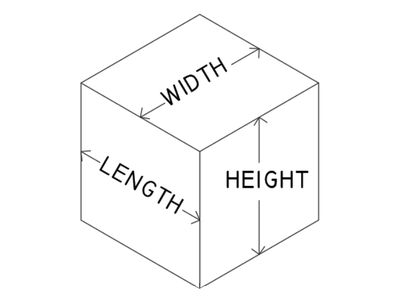

At Best Mexico Movers, we charge our clients based on the volume of cubic feet that their household goods occupy, rather than by the weight of their household goods.
Why?
Because while very few people know how much their household goods weigh, everyone can see with their own eyes how much space their treasured belongings occupy in a truck trailer.
The basic math...
We all live in a three-dimensional world. Those three dimensions are height, width and depth. If we were to draw a cube, we can show these three dimensions with the first illustration.
To calculate the cubic feet of an object like this cube, we would simply multiply the object’s height by its width by its length. Here is the same box as above, but with its dimensions shown:
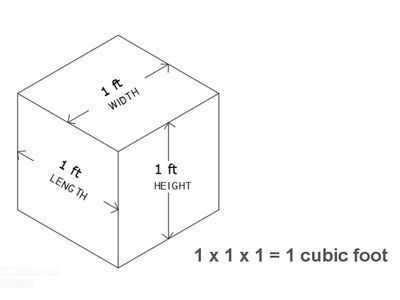
This box above takes up one cubic foot because when we multiply each of its three dimensions together, we come up with the number one. (One foot in height multiplied by one foot in width multiplied by one foot in length.)
To test our understanding, how many cubic feet does this next cube or box occupy?

If you answered that this cube takes up 24 cubic feet, you got it right. (Just multiply 4 x 3 x 2.)
Estimating the Cubic Feet of your belongings...
So, how can we use this to estimate how many cubic feet your household goods will take up on our truck’s trailer?
One method we’ve used that has been pretty successful is for our clients to imagine a standard second or third bedroom in a standard US or Canadian house that is 10 feet long by 10 feet wide. Perhaps you have a room like this in your house. (You can see if you do by taking out a measuring tape and finding out.)
We then ask our clients to imagine a relatively tall man, six feet tall, standing in the middle of that 10 x 10 room and reaching his arm as high as it will go. If he did this, his fingers would barely reach 8 feet, which we will use for where the ceiling is in this room. This would be a standard ceiling in a standard home in the US or Canada, or for that matter, the dimensions of a standard 10 x 10 storage unit, which mostly have 8-foot-high ceilings.
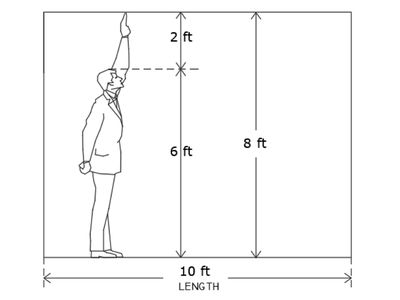
Can you imagine that room? Or perhaps, do you have a room like that in your home that you can walk into?
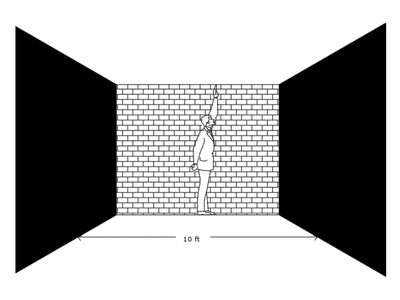
Now, imagine all your household goods loaded into that room with no spaces whatsoever, front to back, side to side, and floor to ceiling.
Would your items take up the entire room? Half the room? Perhaps two or three rooms?
In order to help you imagine this, please take a look at the drawings below, showing three possibilities.
Let’s imagine that in this 10 foot by 10 foot room with the eight foot ceiling, your household goods would take up the entire room, with no place to walk, open a door, or anything else, all the way to the ceiling.
That first possibility is drawn below...
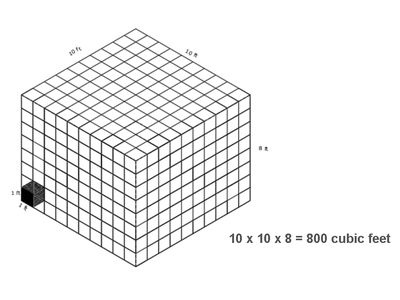
If this were your situation, your household goods would occupy about 800 cubic feet, exactly equal to the cubic feet in that 10 foot by 10 foot room.
But let’s say that your household goods would only occupy about half of that room, like the next drawing below...

If this were your situation, your household goods would occupy about 400 cubic feet, or half of that 800 cubic foot room.
Next, let’s assume that your household goods could fill TWO of the 800 cubic foot rooms, like the drawing below. In this case, you would have around 1,600 cubic feet.

If you use this method, you won’t have an exact measurement, but you should be pretty close.
If you’ve got this, that’s probably enough and you can stop reading. But if you would like to learn about linear feet, we can keep going.
How to determine Linear Feet in a truck...
Let’s talk about linear feet in a standard commercial truck trailer, like the ones we generally use in the US and Canada (but not always in Mexico).
The trailers we generally use are nine feet high and eight feet wide, like the one shown below...
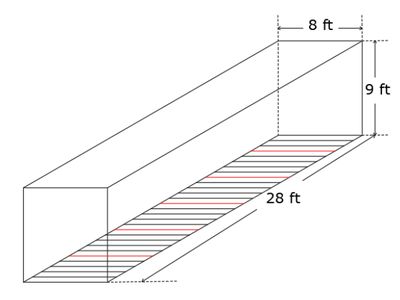
If your household goods are perfectly loaded and tight in the trailer, how many linear feet your household goods would occupy in the trailer is the final dimension, which is length (also known as “linear feet”). You can calculate this by imagining that you walk into the trailer, take out a tape measure at the front wall of the trailer and measure straight back, towards the doors of the trailer that you opened to get into the trailer.
We already know from what we learned above that if your household goods occupy one linear foot in a trailer that is nine feet high and eight feet wide, your goods would occupy 72 cubic feet. (9 x 8 x 1).
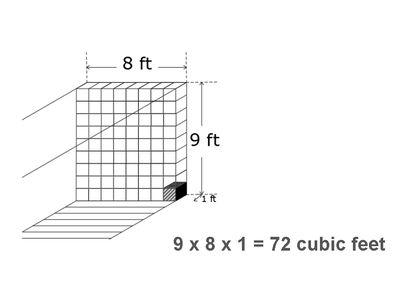
How many linear feet would be needed in this nine-foot-high and eight-foot-wide trailer if you had 720 cubic feet of household goods, perfectly loaded?
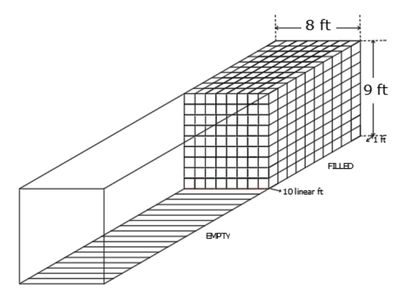
If you answered “10,” go to the front of the class.
By remembering that a semi trailer holds 72 cubic feet per linear foot of flooring, you can easily determine the linear feet by dividing by 72. For example, a 1150 cubic foot load divided by 72 results in 16 linear feet in the trailer.
Capacity of some common Trucks, Trailers, and Containers
Below is the approximate amount of cubic feet that different vehicles typically hold...
10-foot rental truck: 402 cubic feet
15-foot rental truck: 763 cubic feet
17-foot rental truck: 865 cubic feet
20-foot rental truck: 1,015 cubic feet
26-foot rental truck: 1,611 cubic feet
28-foot semi trailer: 2,016 cubic feet
53-foot semi trailer: 3,816 cubic feet
20-foot ocean container: 1,172 cubic feet
40-foot ocean container: 2,367 cubic feet
At Best Mexico Movers, it’s very important to us that we do our best to explain to all our clients everything they want to know about their move. If you want to know more about cubic feet or linear feet, or anything else about your move, just give us a call.

